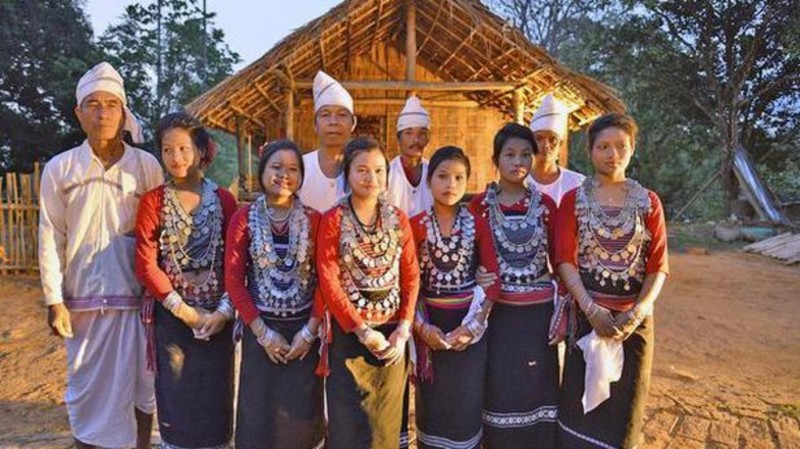
The indigenous people of India, known as Indian tribes, are an integral part of the country's cultural tapestry. With a rich heritage that spans thousands of years, these tribes exhibit diverse customs, languages, traditions, and belief systems. In this article, we will explore the fascinating world of Indian tribes, shedding light on their unique characteristics, cultural significance, social structure, challenges faced, and the initiatives taken by the government for their welfare.
Diversity of Indian Tribes: India is home to a vast array of tribal communities, each with its own distinct identity and way of life. From the remote hills of the Himalayas to the dense forests of Central India and the coastal regions, these tribes inhabit various geographical areas. With over 700 tribes recognized by the government, India boasts incredible ethnic and linguistic diversity. Each tribe has its own set of customs, rituals, festivals, and languages, making the cultural landscape of Indian tribes incredibly rich and vibrant.
Cultural Significance: Indian tribes have played a significant role in shaping the cultural heritage of the country. Their art, music, dance forms, folklore, and oral traditions have been passed down through generations, reflecting their deep connection with nature, spirituality, and community. Tribal festivals are celebrated with great enthusiasm, showcasing their unique rituals, colorful attire, and lively performances. These cultural expressions provide a glimpse into the indigenous wisdom and traditions that have withstood the test of time.
Historical Background: The history of Indian tribes dates back thousands of years. Many tribes have ancient roots, tracing their lineage to the prehistoric era. These tribes have witnessed the rise and fall of empires, colonization, and the struggle for independence. Over the centuries, they have adapted to changing times while preserving their indigenous knowledge and practices. Understanding the historical context of Indian tribes helps in appreciating the resilience and tenacity they have shown throughout their existence.
Social Structure and Tribal Governance: Indian tribes have distinct social structures and systems of governance. They often follow a communal way of life where decisions are made collectively within the community. Elders hold significant influence and are revered for their wisdom and experience. Tribal councils and village panchayats play crucial roles in resolving disputes and maintaining harmony within the community. The social fabric of Indian tribes emphasizes unity, cooperation, and mutual support.
Indigenous Art and Crafts: One of the remarkable aspects of Indian tribes is their artistic prowess. They are known for their exquisite craftsmanship and skills in various art forms, including pottery, weaving, woodcarving, painting, and metalwork. Each tribe has its own unique artistic style, motifs, and techniques, which are often passed down through generations. The tribal art forms not only serve as a means of livelihood but also represent the cultural identity and creativity of these communities.
Traditional Medicinal Practices: Indian tribes possess a deep understanding of the healing properties of plants and herbs. Their traditional medicinal practices have been honed over centuries and are based on a holistic approach to health and well-being. Tribes have extensive knowledge of herbal remedies, Ayurvedic treatments, and alternative therapies. These practices are rooted in their close relationship with nature and their belief in the interconnectedness of the mind, body, and spirit.
Challenges Faced by Indian Tribes: Despite their rich cultural heritage, Indian tribes face numerous challenges in the modern era. Encroachment on their lands, loss of traditional livelihoods, forced displacement, and inadequate access to education and healthcare are some of the pressing issues. Economic disparities, social marginalization, and cultural assimilation pose significant threats to the tribal way of life. Preserving their distinct identity and ensuring their well-being require focused attention and sustainable solutions.
Government Initiatives and Tribal Welfare: Recognizing the importance of tribal communities, the Indian government has undertaken various initiatives to promote their welfare. Constitutional safeguards, affirmative action, and the establishment of autonomous tribal regions are some of the measures aimed at protecting their rights and preserving their culture. Government schemes focusing on education, healthcare, skill development, and income generation have been implemented to uplift tribal communities and enhance their socio-economic conditions.
Future Prospects: The future of Indian tribes holds both challenges and opportunities. While the preservation of cultural heritage and traditional knowledge remains paramount, there is also a need to adapt to changing times. Empowering tribal communities through education, skill development, and entrepreneurship can help them navigate the complexities of the modern world while retaining their unique identity. Collaboration between tribes and mainstream society can foster mutual respect, understanding, and inclusive development.
Conclusion: Indian tribes are the custodians of a rich cultural legacy that spans millennia. Their customs, languages, art forms, and traditional practices provide a glimpse into the country's diverse heritage. Preserving and promoting the unique identity of Indian tribes is essential for maintaining cultural pluralism and upholding the principles of inclusivity. By recognizing the challenges faced by these communities and taking proactive measures, we can ensure the well-being and prosperity of Indian tribes for generations to come.
Unraveling the Key Elements and Transformational Amendments of the Indian Constitution
Unveiling the Powerhouses: Exploring the Major Capitals of Indian Commerce
The Resilient Journey: Unveiling the History of the Indian Women's Movement